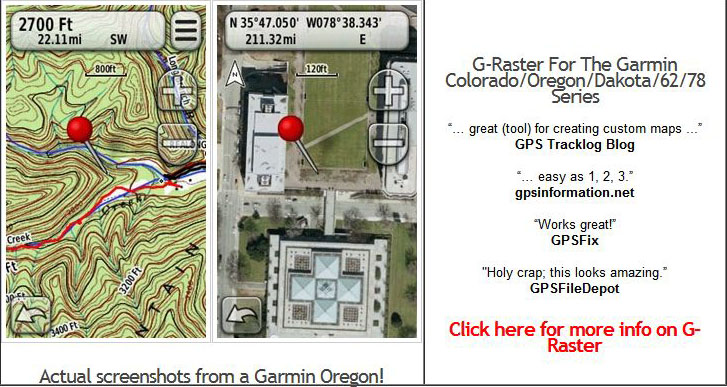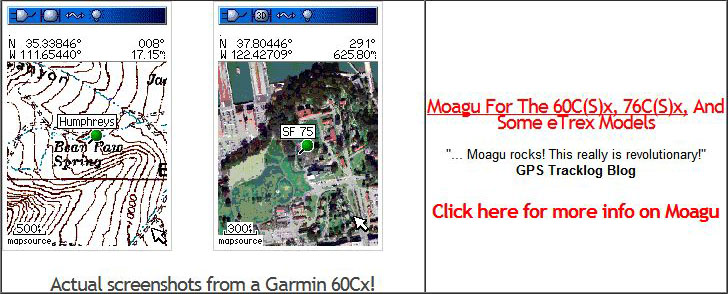A reader from New Zealand writes, “I’m looking for a tool that will assist in the production of 3d terrain models from GPS elevation and track data. Ideally I would be able to walk over the land and generate continuous track data that could then be used to build a 3d mesh with the ability to refine it over time, fill in areas with higher detail. What is the best tool (in your opinion) for achieving something like this?” Can’t think of a single tool off the top of my head, but several ideas for possible approaches to handling this kind of data come to mind. But while this might be a good idea conceptually, it relies on the assumption that you can get accurate, consistent, repeatable position and altitude data from a GPS. And that’s not a good assumption.
GPS manufacturers routinely state that the altitude derived from GPS measurements is less accurate than the position by at least a factor of 1.5, and it might be even higher (see below). For a standard consumer-grade GPS unit with no broadcast correction like WAAS/EGNOS, the 95% confidence interval for position is typically on the order of 15 meters (close to 50 feet), and the altitude confidence is 95% to a precision of 22.5 meters with 95% confidence (about 75 feet). Neither the position nor altitude accuracies are really good enough to create a quality DEM.
With WAAS/EGNOS enabled, the position precision increases to 3 meters (10 feet), which would suggest that the altitude precision might be 4.5 meters, or roughly 15 feet, possibly adequate for making a DEM. But one informal study of GPS altitude error showed mean absolute altitude errors of about 40-45 meters on one day, and 23-34 meters on another day using data from three different GPS units. My own quick measurement with a Garmin 60Cx unit, using waypoint averaging, showed an altitude that was off by about +20 meters with WAAS enabled at one time, and -15 meters about 8 hours later, a total differential of 35 meters (over 100 feet). This isn’t surprising, since the measurement will depend on GPS satellite geometry, which is constantly changing.
If you don’t have WAAS/EGNOS broadcast correction available, as is the case in New Zealand, you’d have to deal not only with errors due to satellite geometry, but also lack of any real-time correction for satellite ephemeris and ionospheric effects, factors which can introduce significant amounts of error into both horizontal and vertical positions. Those errors will be different every time you make a track, and it’s not easy to determine how much the error magnitude varies from one time period to another. And of course, out in the field you’ll have to deal with GPS satellite signals being blocked by topography, buildings, and vegetation, further reducing accuracy.
Using post-processing techniques that compensate for ionospheric and ephemeris effects, you would probably improve your horizontal accuracy significantly, but the altitude error would likely still be too large to be usable. If you have a local differential GPS broadcaster, and a differential-capable GPS unit, your horizontal error could be brought down to roughly a meter, and your altitude error down to 3-10 meters, by averaging positions. But unless you already own that equipment, the cost is going to be prohibitive, and averaging at every point will take much more time than just walking across the terrain to create a track.
In summary, the uncertainty in both position and altitude accuracy with a standard consumer-grade GPS unit make it unsuitable for creating a DEM using tracks.



One think you left out is that where the DEM matters the most is in rough terrain, where:
1. It is hard to get to (how do you map those steep mountain slopes).
2. GPS accuracy is even worse on the side of a mountain.
I’ve been looking for a way to create DEMs out of GPS data too, but I do have the luxury of base station-corrected, survey grade GPS data. I’m interested in making DEMs from a large set of points that I can put into MicroDEM to show off the results of a survey in 3D.
MicroDEM has a built-in capability to convert an XYZ file into a DEM. It has to be evenly gridded, but MicroDEM has a rudimentary capability to do that, and can also construct a batch file for the Generic Mapping Tools (GMT) that use a superior gridding method. Full details in the MicroDEM help file – do a search for “ASCII XYZ” and/or “GMT Gridding” for more information.
What free software is available for creating DEMs?
Check the comment immediately above yours.
Alright thanks I saw that I just wasnt sure if that was the only free one out there
this is a good site with a verry good topics, thanks
i ve bougth triton 2000 to use it in Morocco but i didnt find coordinates system referred to this country, i tried to implement conic lambert projection in user grid but didnt give position coordinates
help me solve this issue
greatfull